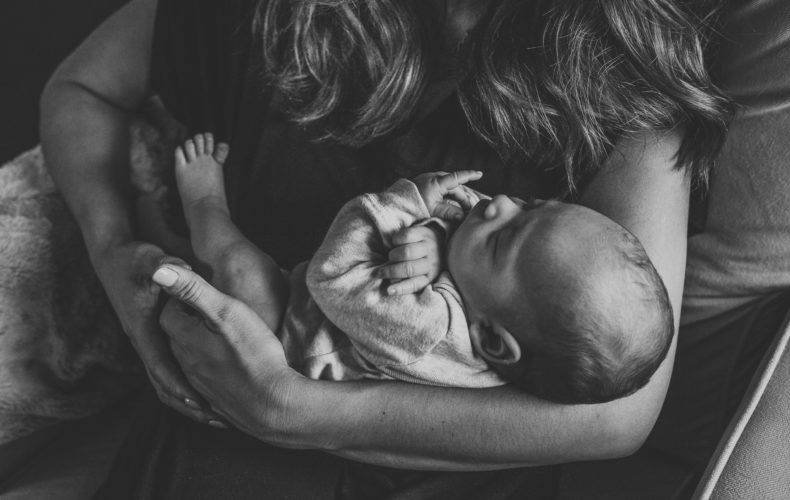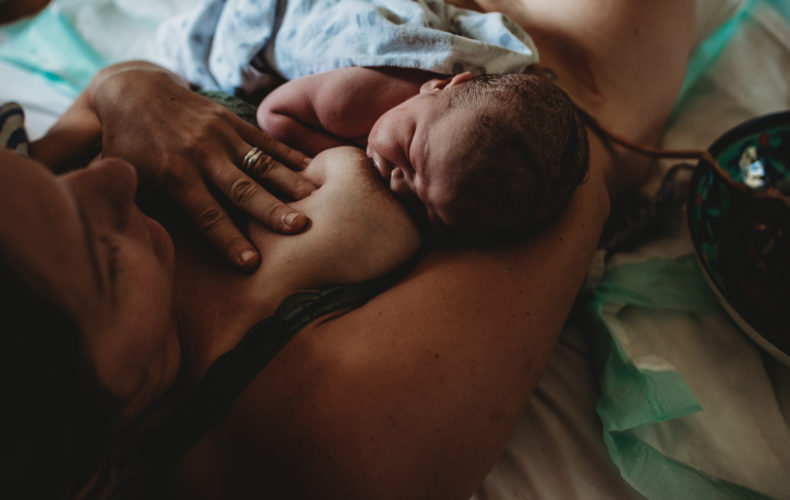As told by Kayla:
We’re about two weeks out from welcoming our second baby, and I’ve noticed there’s a big difference in the way we’re preparing for her, compared to our first.
Sure, there’s a lot that’s the same — pre-washing the clothes, blankets, bibs, etc.; setting up the swing; setting up a pack & play in our room; setting up changing stations; stockpiling diapers. There are small things about this process that are different – we washed everything in Tide Free & Clear instead of Dreft because our first had a reaction to fragrances and so everything had to be rewashed when she was a newborn. This time, we’re just starting with free & clear or sensitive everything – soaps, detergents, lotions… you name it, if it comes in an unscented variety, that’s the one we have.
But the biggest difference is the way we’re prepping to make my life easier after kid 2. When you’re having your first, almost all of your focus is on getting ready for baby. At least, it was for me. I made loose plans for myself postpartum – mainly about how long I’d stay home from work and whether or not I’d be willing to respond to emails.
But this time? This time I’ve spent more time setting myself up for a better postpartum.
How?
Coming to Terms With Reality
Well, the first way is by embracing the reality of birthing a child. You’re going to bleed. A lot. It’s not a normal period. It doesn’t go away in 5 or 6 days, and your normal pads aren’t going to do the trick. You can’t wipe for a while after having a baby. At least, I couldn’t, not with the stitches from my tear. So a priority for this go-round was creating my bathroom baskets – each basket (one for each bathroom) has adult diapers (I found hospital-provided mesh underwear to be super uncomfortable, so I’m actually bringing some to the hospital too), the thickest, biggest pads I could find, equally large, but thinner pads, Dermoplast, Frieda Mom’s new witch hazel vag pads, and their peri-bottle. Overkill? Nope. Nothing worse than sitting down and then realizing you don’t have your peri-bottle. Or that you don’t have the right size pad you need.
Knowing My Boundaries
During our birth class (with Bergen & Julie – you’re the best!), my husband and I both drew our ideal birth and then shared the vision. We both drew us, surrounded by our immediate family – parents and siblings (I also drew our dog, but ya know, hospitals frown on that). And, that’s what we ended up with. We were surrounded by family for the birth, and then after the birth, while we were still in the hospital, we had lots of visitors come and see us and meet our daughter. But then, while I was home alone with a newborn on maternity leave, I was alone, a lot. Which was not good for my mental health.
So this time, we’re limiting hospital visitors to parents and siblings. We really loved that aspect, but we’re asking everyone else to wait to visit until we’re home. I had a delayed bonding with my first daughter because in the hospital, I was either trying to get her to latch or sleeping between visitors. I got very little snuggle time. This time, we’ll be doing plenty of snuggling just for snuggling’s sake. I also need adult interaction. I need people to pop by and say hi and sit with me for a few minutes and remind me that there is a world outside of diapers and sleep and bottles. So we hope our friends and family will visit throughout maternity leave.
Getting Rid of Clutter
My hospital bag for kid 1… I actually don’t think you can call it a hospital bag.. Because we had three? I am an over-packer by nature. You name it, I had it. Cards for my husband, a bluetooth speaker, snacks, drinks, a boppy, multiple outfits, diapers, wipes, blankets, a robe, toiletries…and I’m sure I’m forgetting things.This time, I’ve fit everything (including my preferred pump and pump parts) into one bag. The essentials. The hospital will provide diapers and wipes and pillows. I know I won’t feel like changing outfits a bunch. I don’t need to pack shoes because I’m going to wear shoes TO the hospital – I don’t need multiple pairs. I’m using hospital towels because I don’t need to bring home dirty laundry.
Focusing on Outside Time
Now, kid 1 was a November baby, so a good chunk of my maternity leave was over winter, which intimidated me. She’s too little to bring outside! But let’s be real- most of November and early December is totally fine for a properly dressed baby. Even late December and January is good as long as you dress your baby appropriately. But, I had PPA that went undiagnosed for a while, and that told me outside wasn’t safe. Kid 2 is going to be an August baby, and I’m better able to identify PPA thoughts vs valid concerns. So, this go-round, I’m going to prioritize spending at least 30 mins outside every day it’s not raining. Because, frankly, it’s good for the soul. And I think it may help prevent a backslide into PPA hell.
Planning to Pump
I spent a good amount of time prepping to direct nurse with kid 1. It didn’t work out, and I ended up being an exclusive pumper. This go-round, I’m choosing to be an EP’er from the start. I decided I don’t need the stress I associate with trying to DN, and while I know that it can be different with each kid, I also know, in my bones, it’s the best way to take care of ME during post-partum. I can split night feedings with my husband. I can drop her off with daycare and know she’ll take a bottle fine. I know myself well enough now to know I need that freedom. And, this time around, I made it easier on myself. I splurged and bought a pumping-specific bag that can also double as a work/diaper bag. Because lugging 3 makeshift bags around was awful. I splurged on a tiny Spectra S9 portable pump, and a fanny pack to hold it in.
I know there’s some stuff here I just wouldn’t have known as a first time mom. There’s some other stuff I realized after kid 1, but wasn’t ready to put in place. This time, I’m feeling more confident about what I need and what I want. And it’s not selfish of me to name these needs and wants and set boundaries to protect them or spend money on myself to make my life easier.
When you birth a child, you’re also birthing a new version of yourself – as a mother, and you need love and support in this new phase too. Please ask for it. Please name specifically what you need, and tell people specifically how they can help you. People want to be helpful, but are often worried about crossing social lines. Tell them what you need. And if you don’t know, say that too. Sometimes it’s just as simple as not being alone. The newborn days are magical, but also really hard. And I’ve found they’re better when you call on your village to help.
Sending love to all the mamas-to-be, the new mamas, the veteran mamas. You’re all doing a great job.
Find Kayla’s exclusive pumping Milk Story HERE
More about the Life after Birth Project HERE
Photo: Bergen Howlett



